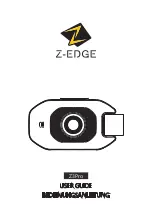
English
11
4.2 Studio Lighting
The quality of the shot greatly depends
upon correct lighting. This section details
how you can improve your studio lighting
set-up. The 4 light sources discussed areas
follows:
Main lighting
(13)
: Soft light source using a
flash with an umbrella, soft box or other
reflector, preferably at an angle of 45º to
the axis of shooting and at a distance of
2m from the subject.
Fill-in lighting
(14)
: Weaker and more dif-
fused light than the main light source. Posi-
tioned opposite the main light source to
soften harsh facial shadows according to
setting, light intensity and/or distance.
Background lighting
(15)
: Positioned close
to the screen behind the subject to elimi-
nate the shadows cast by the person onto
the background.
Overhead lighting
(16)
gives depth to the
photograph and produces subtle lighting
effects on hair and shoulders. This source
of lighting should be positioned between
70cm and 1m above the head. (Please
ensure that it is not reflected in the lens.)
Example of a professional lighting set-up
(17)
: Use all 4 light sources described
above to achieve optimum results:
a
Main lighting
b
Fill-in lighting
c
Background lighting
d
Overhead lighting (if necessary with honey-
combed diffusing screen)
Example of a simplified lighting set-up
(18)
:
If space is restricted we recommend the
following solution:
a
Main lighting
b
Secondary lighting comprising a white
reflective screen
c
Combined background lighting and, if nec-
essary, overhead lighting.
When using flash lighting, the ideal set up
is with two light sources positioned as
shown. If you are using only one off DMP
lighting source, it should be positioned as
close to the lens as possible to avoid shad-
ows (preferably directly above).
Note
: It is particularly important when
using flash lighting, to ensure balanced
lighting of subject and backdrop. If back
lighting is used e.g. to remove a shadow
behind the subject, it should be set to low
power to avoid over-exposing. Saturating
the backdrop may cause an imbalance in
the image.
4.3 Exposure correction
If exposure correction is needed see below
Note
: There may be differences between
the preview screen image and the photo
image so you may need to return to this
table after printing a test picture.
If image is too dark If image is too light
Increase brightness
setting
(5w)
or
Move the DMP or
lights closer to the
subject and zoom
out
or
Increase light output
Decreasing bright-
ness setting
(5w)
or
Move the DMP or
lights away from the
subject and zoom in
or
Decrease light output
Summary of Contents for DIGITAL MINI PORTRAIT
Page 1: ......
Page 2: ...English Fran ais Deutsch Italiano Espa ol Nederlands Portugu s T rk e 3 17 33 50 66 82 98 114...
Page 130: ...d a i j k l m o n p q r b c e f g f h 1...
Page 132: ...1 2 1 6m 3 9 5 2ft 6 8 10 11 12 9 7 1...
Page 133: ...a b c d a b c 13 13 15 16 18...
Page 134: ...19 20 21 22 23 24...












































